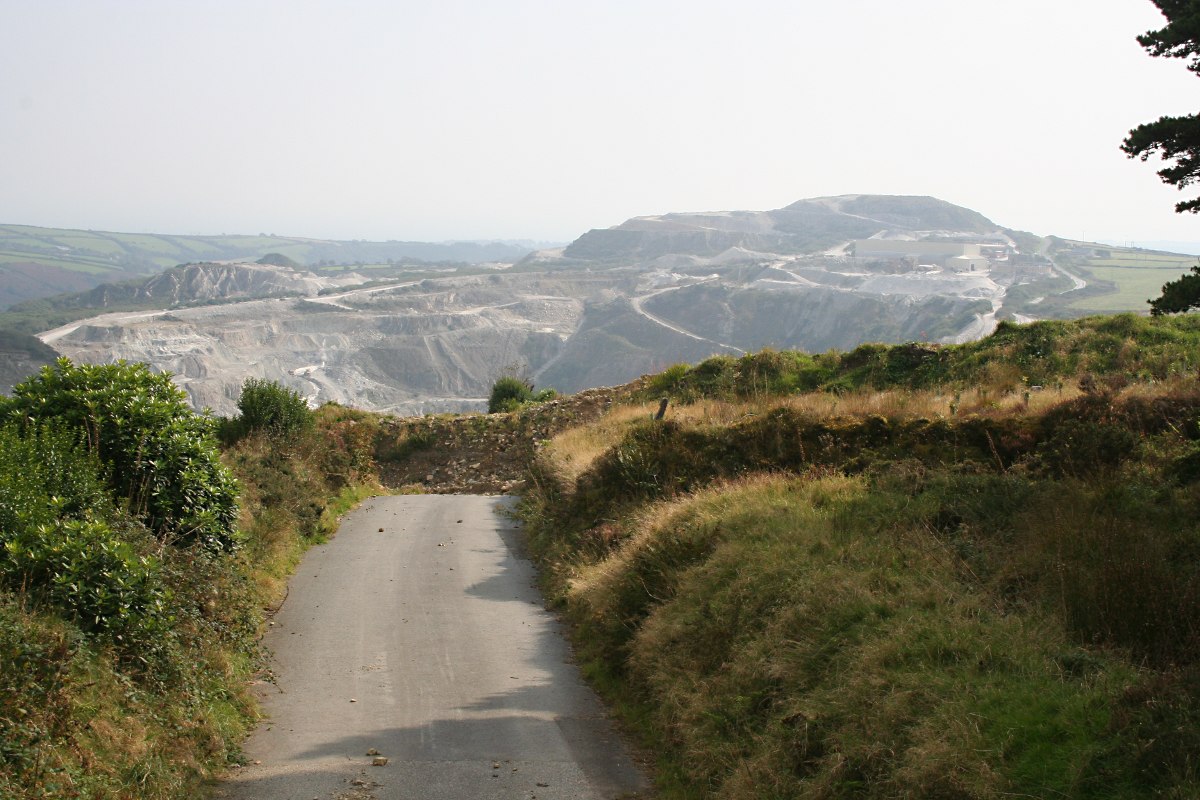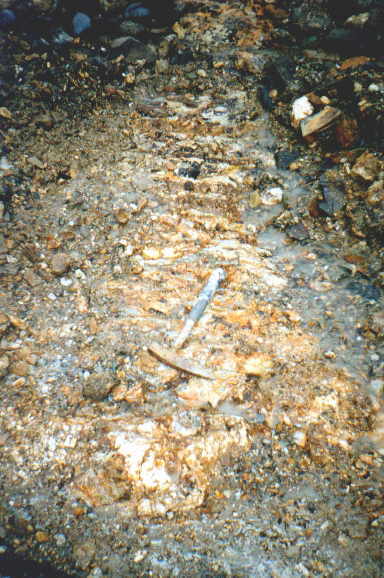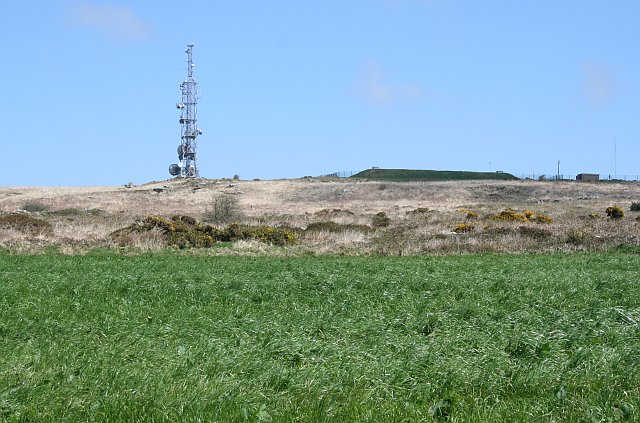|
Poldark Mine
Poldark Mine is a tourist attraction near the town of Helston in Cornwall, England, UK. It lies within the Wendron Mining District of the Cornwall and West Devon Mining Landscape World Heritage Site. Its features include underground guided tours through ancient tin mine workings; a museum of industrial heritage, mining equipment and Cornish social history; and a scheduled ancient monument and riverside gardens. It opened in 1972 as Wendron Forge and was later known as Ha'penny Park. After an ancient tin mine was discovered on the site it was renamed after Winston Graham's ''Poldark'' novels and the BBC television series that was first broadcast in 1975. The mine was researched by A. K. Hamilton Jenkin, an authority on Cornish mining history, who attributed it to Wheal Roots which had been active in the 18th century. The original owner, Peter Young, sold Poldark Mine in 1988 following which it passed through two owners and declined in popularity. It went into administration fo ... [...More Info...] [...Related Items...] OR: [Wikipedia] [Google] [Baidu] |
Tourist Attraction
A tourist attraction is a place of interest that tourists visit, typically for its inherent or an exhibited natural or cultural value, historical significance, natural or built beauty, offering leisure and amusement. Types Places of natural beauty such as beaches, tropical island resorts, national parks, mountains, deserts and forests, are examples of traditional tourist attractions which people may visit. Cultural tourist attractions can include historical places, sites of significant historic event, monuments, ancient temples, zoos, aquaria, museums and art galleries, botanical gardens, buildings and structures (such as forts, castles, libraries, former prisons, skyscrapers, bridges), theme parks and carnivals, living history museums, public art (sculptures, statues, murals), ethnic enclave communities, historic trains and cultural events. Factory tours, industrial heritage, creative art and crafts workshops are the object of cultural niches like industrial tourism and ... [...More Info...] [...Related Items...] OR: [Wikipedia] [Google] [Baidu] |
Greensplat
Greensplat is a location in south Cornwall, England, United Kingdom. It is immediately west of Carthew and is approximately two miles (3 km) north of St Austell. According to the Post Office the 2011 census population was included in the civil parish of Treverbyn. Greensplat is situated in the china clay area and the name is believed to be derived from ''Green's Plat'', referring to a mine shaft nearby that was known as "the Plat". Greensplat is sometimes erroneously spelled Greensplatt. History Until 1997 there was a settlement at Greensplat. However, due to expansion of the nearby Wheal Martyn china clay quarry the centre of Greensplat was entirely demolished. ''West Briton'' newspaper website. Retrieved April ... [...More Info...] [...Related Items...] OR: [Wikipedia] [Google] [Baidu] |
Stamp Mill
A stamp mill (or stamp battery or stamping mill) is a type of mill machine that crushes material by pounding rather than grinding, either for further processing or for extraction of metallic ores. Breaking material down is a type of unit operation. Description A stamp mill consists of a set of heavy steel (iron-shod wood in some cases) stamps, loosely held vertically in a frame, in which the stamps can slide up and down. They are lifted by cams on a horizontal rotating shaft. As the cam moves from under the stamp, the stamp falls onto the ore below, crushing the rock, and the lifting process is repeated at the next pass of the cam. Each one frame and stamp set is sometimes called a "battery" or, confusingly, a "stamp" and mills are sometimes categorised by how many stamps they have, i.e. a "10 stamp mill" has 10 sets. They usually are arranged linearly, but when a mill is enlarged, a new line of them may be constructed rather than extending the line. Abandoned mill sites (as ... [...More Info...] [...Related Items...] OR: [Wikipedia] [Google] [Baidu] |
Scheduled Monument
In the United Kingdom, a scheduled monument is a nationally important archaeological site or historic building, given protection against unauthorised change. The various pieces of legislation that legally protect heritage assets from damage and destruction are grouped under the term "designation." The protection provided to scheduled monuments is given under the Ancient Monuments and Archaeological Areas Act 1979, which is a different law from that used for listed buildings (which fall within the town and country planning system). A heritage asset is a part of the historic environment that is valued because of its historic, archaeological, architectural or artistic interest. Only some of these are judged to be important enough to have extra legal protection through designation. There are about 20,000 scheduled monuments in England representing about 37,000 heritage assets. Of the tens of thousands of scheduled monuments in the UK, most are inconspicuous archaeological sites, but ... [...More Info...] [...Related Items...] OR: [Wikipedia] [Google] [Baidu] |
Mortar And Pestle
Mortar and pestle is a set of two simple tools used from the Stone Age to the present day to prepare ingredients or substances by crushing and grinding them into a fine paste or powder in the kitchen, laboratory, and pharmacy. The ''mortar'' () is characteristically a bowl, typically made of hard wood, metal, ceramic, or hard stone such as granite. The ''pestle'' (, also ) is a blunt, club-shaped object. The substance to be ground, which may be wet or dry, is placed in the mortar where the pestle is pounded, pressed, and rotated into the substance until the desired texture is achieved. Mortars and pestles have been used in cooking since prehistory; today they are typically associated with the profession of pharmacy due to their historical use in preparing medicines. They are used in chemistry settings for pulverizing small amounts of chemicals; in arts and cosmetics for pulverizing pigments, binders, and other substances; in ceramics for making grog; in masonry and in other typ ... [...More Info...] [...Related Items...] OR: [Wikipedia] [Google] [Baidu] |
Dartmoor Tin-mining
The tin mining industry on Dartmoor, Devon, England, is thought to have originated in pre-Roman times, and continued right through to the 20th century, when the last commercially worked mine (Golden Dagger Mine) closed in November 1930 (though it saw work during the Second World War). From the 12th century onwards tin mining was regulated by a stannary parliament which had its own laws. Tin is smelted from cassiterite, a mineral found in hydrothermal veins in granite, and the uplands of Dartmoor were a particularly productive area. The techniques used for the extraction of tin from Dartmoor followed a progression from streaming through open cast mining to underground mining. Today, there are extensive archaeological remains of these three phases of the industry, as well as of the several stages of processing that were necessary to convert the ore to tin metal. Stannary law Mining became such an important part of life in the region that as early as the 12th century, tin miners ... [...More Info...] [...Related Items...] OR: [Wikipedia] [Google] [Baidu] |
Lode
In geology, a lode is a deposit of metalliferous ore that fills or is embedded in a fissure (or crack) in a rock formation or a vein of ore that is deposited or embedded between layers of rock. The current meaning (ore vein) dates from the 17th century, being an expansion of an earlier sense of a "channel, watercourse" in late Middle English, which in turn is from the 11th-century meaning of ''lode'' as a ‘course, way’. The generally accepted hydrothermal model of lode deposition posits that metals dissolved in hydrothermal solutions (hot spring fluids) deposit the gold or other metallic minerals inside the fissures in the pre-existing rocks. Lode deposits are distinguished primarily from placer deposits, where the ore has been eroded out from its original depositional environment and redeposited by sedimentation. A third process for ore deposition is as an evaporite. A stringer lode is one in which the rock is so permeated by small veinlets that rather than mining the v ... [...More Info...] [...Related Items...] OR: [Wikipedia] [Google] [Baidu] |
Erosion
Erosion is the action of surface processes (such as water flow or wind) that removes soil, rock, or dissolved material from one location on the Earth's crust, and then transports it to another location where it is deposited. Erosion is distinct from weathering which involves no movement. Removal of rock or soil as clastic sediment is referred to as ''physical'' or ''mechanical'' erosion; this contrasts with ''chemical'' erosion, where soil or rock material is removed from an area by dissolution. Eroded sediment or solutes may be transported just a few millimetres, or for thousands of kilometres. Agents of erosion include rainfall; bedrock wear in rivers; coastal erosion by the sea and waves; glacial plucking, abrasion, and scour; areal flooding; wind abrasion; groundwater processes; and mass movement processes in steep landscapes like landslides and debris flows. The rates at which such processes act control how fast a surface is eroded. Typically, physical erosion procee ... [...More Info...] [...Related Items...] OR: [Wikipedia] [Google] [Baidu] |
Cassiterite
Cassiterite is a tin oxide mineral, SnO2. It is generally opaque, but it is translucent in thin crystals. Its luster and multiple crystal faces produce a desirable gem. Cassiterite was the chief tin ore throughout ancient history and remains the most important source of tin today. Occurrence Most sources of cassiterite today are found in alluvial or placer deposits containing the weathering-resistant grains. The best sources of primary cassiterite are found in the tin mines of Bolivia, where it is found in crystallised hydrothermal veins. Rwanda has a nascent cassiterite mining industry. Fighting over cassiterite deposits (particularly in Walikale) is a major cause of the conflict waged in eastern parts of the Democratic Republic of the Congo. This has led to cassiterite being considered a conflict mineral. Cassiterite is a widespread minor constituent of igneous rocks. The Bolivian veins and the 4500 year old workings of Cornwall and Devon, England, are concentrated in ... [...More Info...] [...Related Items...] OR: [Wikipedia] [Google] [Baidu] |
Carnmenellis
Carnmenellis Hill (or just Carnmenellis) gives its name to the area of west Cornwall in England, between Redruth, Helston and Penryn. The hill itself is situated approximately three miles (5 km) south of Redruth.Ordnance Survey: Landranger map sheet 203 ''Land's End'' It is one of five Marilyns in Cornwall; the others being Brown Willy (420 m), Kit Hill (334 m), Hensbarrow Beacon (312 m) and Watch Croft (252 m). The natural region of Carnmenellis has been designated as national character area 155 by Natural England. Penmarth, a nearby village, is sometimes referred to locally as Carnmenellis. The term 'Carnmenellis Granite' refers to the plateau In geology and physical geography, a plateau (; ; ), also called a high plain or a tableland, is an area of a highland consisting of flat terrain that is raised sharply above the surrounding area on at least one side. Often one or more sides ha ... of high ground in this area, one of five granite plutons in Cornwall that ... [...More Info...] [...Related Items...] OR: [Wikipedia] [Google] [Baidu] |
River Cober
The River Cober ( kw, Dowr Kohar) is a short river in west Cornwall, England, United Kingdom. The river runs to the west of Helston into The Loe, Cornwall's largest natural lake. Geology and hydrology It rises in Nine Maidens Downs, directly between Hangman's Barrow to the west and the Nine Maidens stone circle to the east, in the former Kerrier District and runs to the west of the town of Helston before entering the largest natural lake in Cornwall – Loe Pool. The water is impounded by the natural barrier, Loe Bar, and the river system can be traced several kilometres out into Mount's Bay. Mining activity of over one hundred years in the river catchment, ceased in 1938, in the Wendron and Porkellis mining districts; and the engine house of Castle Wary (also known as Wheal Pool), near Nansloe can still be seen on the east side of the river below Helston. The lower reaches of river was canalised in 1946 and a causeway built over Loe Marsh in 1987.Le. Messurier, B. and Luck ... [...More Info...] [...Related Items...] OR: [Wikipedia] [Google] [Baidu] |
Llywernog Mine
Llywernog Mine is an 18th-century silver-lead mine in Llywernog, Ceredigion, Wales, currently run as an industrial heritage museum and tourist attraction. Exploiting the mineralised rocks of the Central Wales Orefield, it is one of many silver-lead mines in Wales, and unlike many others it still has a large number of intact buildings and mining equipment, much of which has been restored as part of the museum. The first vein of galena, an ore which contains silver and lead, was discovered around 1742, and active mining commenced in the 1770s. Mining continued intermittently for over a century, interspersed with phases of idleness and with many changes of management. However in 1891, low lead prices forced the mine to close. The mine was briefly active again from 1907 to 1911, when zinc was extracted. In 1974 restoration work began, and the site opened as a museum later that year. In 2012, the site was rebranded as The Silver Mountain Experience, and included an underground hor ... [...More Info...] [...Related Items...] OR: [Wikipedia] [Google] [Baidu] |










